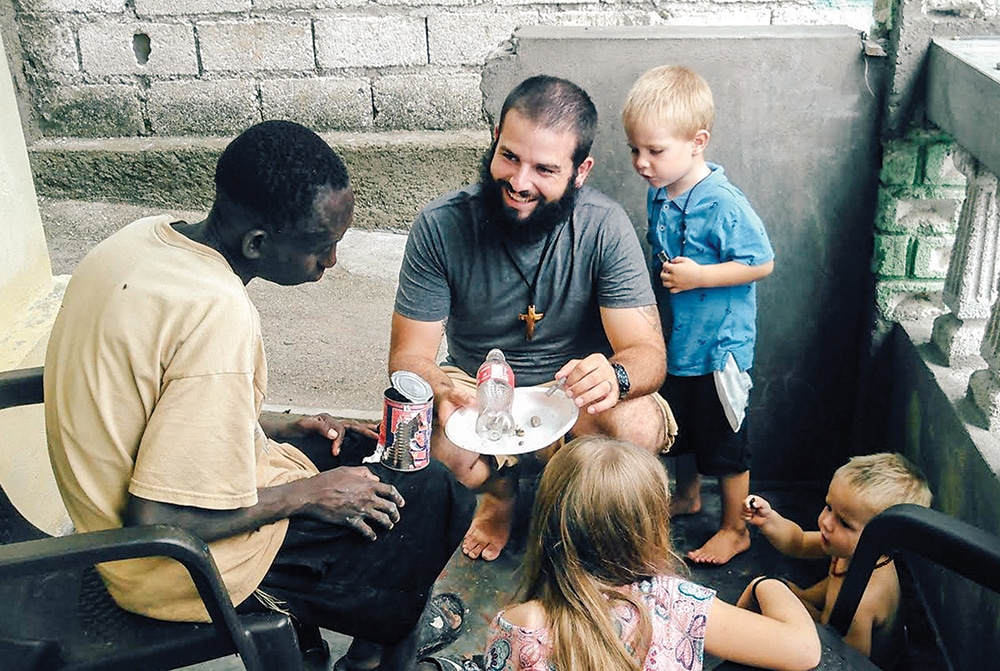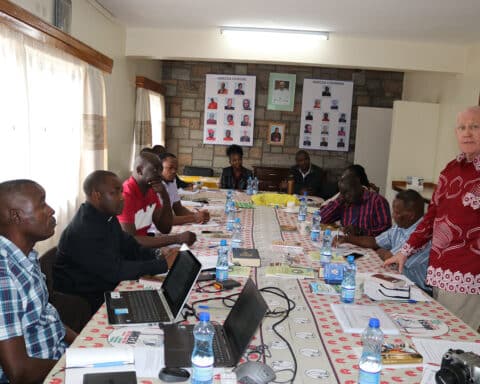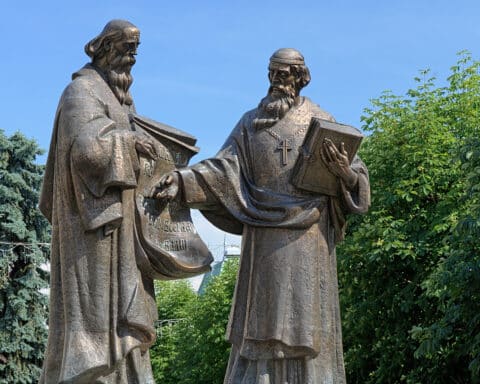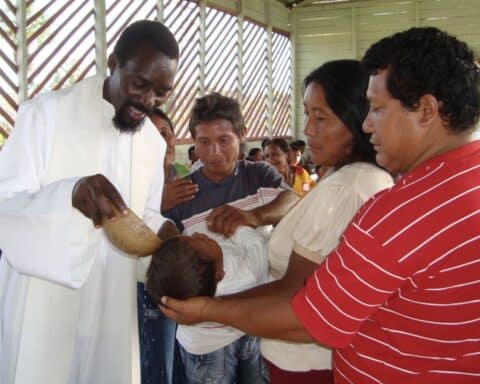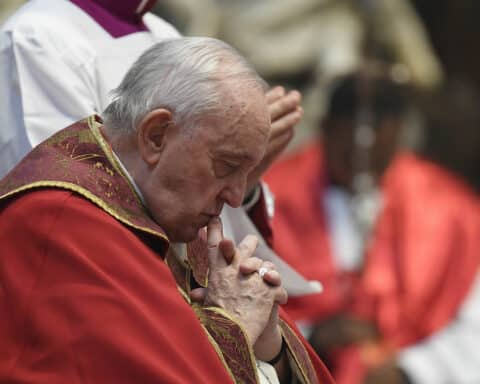Before there was a Church, there was a mission.
“Go, therefore, and make disciples of all nations, baptizing them in the name of the Father, and of the Son, and of the holy Spirit, teaching them to observe all that I have commanded you,” the Lord Jesus instructed the apostles just before his ascension (Mt 28:19-20).
The early Christians took the Lord’s command seriously. The apostles spread the Gospel throughout Europe, the Middle East, Asia Minor and India, with most of them suffering martyrdom. St. Paul traveled all over the Greco-Roman world to preach Christ crucified until he, too, was beheaded in Rome.
Over the ensuing two millenia, Christian missionaries followed the apostles’ example, literally taking the Gospel to all nations and evangelizing everyone from Roman pagans to indigenous peoples in the Americas.
“The Church exists to evangelize. The Church exists to proclaim Jesus. If we’re not doing that, then we’re not a healthy Church,” said Matthew Spizale, the communications director for Family Missions Company, a private association of the faithful based in Louisiana.
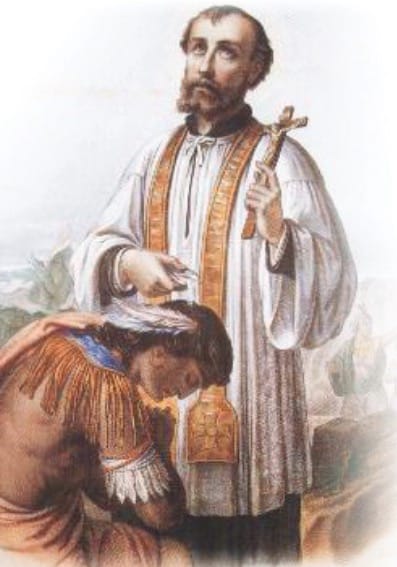
Many canonized saints were missionaries. St. Francis Xavier, the great Jesuit missionary of the 16th century, is estimated to have converted 30,000 people in his mission trips throughout Asia and India. He was the first Christian missionary to venture into Japan.
“Many, many people hereabouts are not becoming Christians for one reason only: There is nobody to make them Christians,” St. Francis Xavier wrote to St. Ignatius of Loyola, the founder of the Jesuits, from Japan.
For more than 2,000 years, missionaries have evangelized and obeyed the demands of the Great Commission, often at the cost of their own lives. In North America, Catholics venerate St. Isaac Jogues and his seven fellow missionary-martyrs who were killed in the mid-17th century while bringing the Gospel to the Huron, Iroquois and Mohawk people.
“Mission is when I go beyond myself. I move outside my comfort zone, and I cross some kind of border — that border could be geographic, economic, linguistic or some combination — and risk a personal encounter with a suffering stranger,” said Donald R. McCrabb, the executive director of the United States Catholic Mission Association.
Catholic missionaries — clergy, religious and laypeople — are still active all over the world. Missionary priests oversee rural parishes and bring the Eucharist to remote villages. Lay missioners teach catechism classes and provide medical care. Religious sisters run Catholic schools and perform the works of mercy. Those are just a few snapshots of what today’s missionaries do.
“By our missioners going to another country, they are being a witness to people there of the larger Church. They’re also then bringing the stories of those people home with them and the experiences they’ve had, learning how God has manifested themselves in their lives and re-energizing the Church here in the U.S. when they return,” said Janice England, the program director of the Lay Mission-Helpers.
No matter where they are, or the type of apostolic work they are engaged in, missionaries look to evangelize, first and foremost, by the example of their lives as they strive to be authentic witnesses of the Gospel.
“If people see a hope in you,” Spizale said, “then God works through them to complete a circuit of evangelization where you are opening up your life, and your life is so connected with Christ that nobody can see what you’re doing and fail to see that it is something connected with Jesus.”
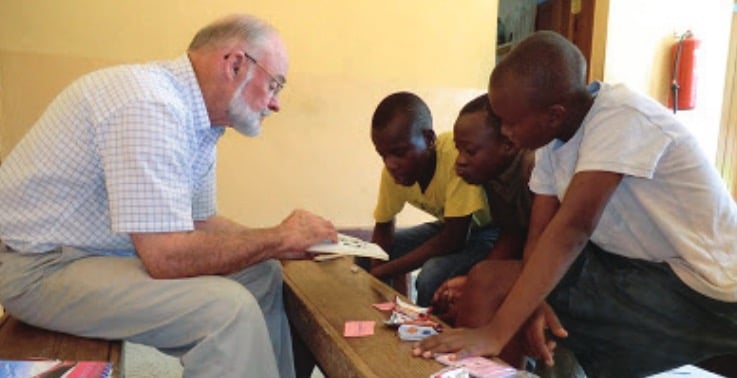
Misunderstanding mission work
The word missionary often conjures up iconic imagery of a priest traveling to a distant land, preaching the Gospel to native people, winning them over by his example and God’s word, baptizing converts and ministering to his flock while overcoming various hardships.
That popular image dates back to when Catholic missionaries accompanied European sailors during the Age of Exploration in the late 15th and 16th centuries.
“The flowering of mission in that traditional image is the handing-over of the Church to the indigenous people where they’re the ones doing the catechizing, organizing the Church, and they’re the ones who are becoming priests and bishops,” said McCrabb of the United States Catholic Mission Association, an organization that supports U.S.-based home and international missionary groups.
That romantic ideal of the missionary appears to have driven John Chau, a 26-year-old American who was killed last November while trying to contact a remote tribe on North Sentinel Island in the Indian Ocean.
Chau, an evangelical Christian who was a self-styled explorer, had reportedly long dreamed of bringing the Gospel to the North Sentinelese people, who do not welcome outsiders and have been known to shoot arrows and spears at anyone who draws near their island.
Chau’s death generated substantial media attention and debates within Christian circles about his prudence and the approach he used to contact a tribe that the Indian government has placed off-limits to visitors.
“I would like to know if there were Catholic or Protestant missionaries in the area who’ve been trying to find a backdoor to befriending (the North Sentinelese). That’s usually the first thing we do,” said Father Kevin Hanlon of the Maryknoll Fathers and Brothers.
In some secular media outlets, the very nature of mission work was called into question, with Chau castigated as the stereotypical foreign missionary who has imperialist designs to destroy local cultures and traditions. That idea of the missionary has deep roots to how mission work was conducted in the 19th century, when emerging industrialization in the West sparked a wave of globalization marked by colonization.
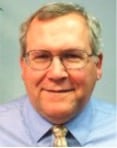
“That era ended with the rise of the independent nation-states, and missionaries were then seen as agents of Western culture that had ended up destroying local cultures,” McCrabb said.
“There are a lot of misunderstandings about mission work. Of course you have had missionaries who had a colonial mentality, but really the ideal for missionaries is you’re there to preach the Gospel. You’re not sent to make people look like Westerners,” Father Hanlon told Our Sunday Visitor.
Past missionaries, including St. Francis Xavier, emphasized the need to learn the local language, culture and customs. Practices and traditions that are not at odds with the Gospel or the Church’s moral teachings are to be respected.
“You have to take the time to figure out what life is like for these people,” McCrabb said. “They may not know what a phone or a TV is. The whole rhythm of their day could be predicated on something other than a clock.”
Seeing Christ in others, being Christ for others
In a modern world that has instant communication, rapid travel and the blurring of markets and culture, the Church is trying to figure out exactly what mission work looks like in that context, McCrabb said.
“Today, mission is less about place and more about people,” McCrabb said. “What do people need? We talk much more about ‘being with’ rather than ‘doing for.’ As a missionary today, you become a member of the community. You don’t come in to impose anything on someone. You come in to be with people, to understand what their hopes and dreams are.”
There also appears to be a tension between the demands of the Great Commission and the increased emphasis, in and outside of the Church, in the modern world of respecting religious traditions, interfaith dialogue, local cultures and customs.
“I do think we have a much better sense of culture and how culture works,” McCrabb said. “Some cultures are more reclusive than others. I think respecting that is an important piece.”
Father Hanlon said missionaries often can serve as a bridge between nations by beginning to introduce people to some things in the modern world while allowing them to preserve their own culture.
“And that’s a good thing, because sooner or later, without their permission, the Western culture is going to come in,” Father Hanlon said.
Father Chris Saenz, a Columban Fathers missionary priest who recently returned home to the United States after 17 years in Chile, told OSV that a missionary can “narrow the gaps between people.”
“The biggest thing I remember working with people in Chile was that when I left those areas, people basically said the same thing: ‘Father, wherever you go, tell them about us, let them know who we are,'” Father Saenz said.
From a secular or atheistic perspective, the idea of foreign mission work may be absurd, even ridiculous. But for Catholics engaged in the work, being on mission is something that Christ specifically calls them to.

“This does go against the grain,” said Spizale of Family Missions Company. “The only way you can understand this kind of desire is to assume that what Jesus said was true, that he is who he was, and the mandate to proclaim him, the Great Commission, is real.”
As to how evangelize in foreign missions, Spizale added that evangelization “should never be divorced from friendship.”
“We want to be friends as much as possible and develop relationships with people,” Spizale said. “Then, you live a Christian witness with them, being upfront with who you are, and you let that relationship develop.”
England, of Lay Mission Helpers, which provides training and support for lay Catholics who serve three years in mission dioceses around the world, told OSV that it is important for missionaries to be mindful that God “is already existing where we go.”
“We are bringing our experience of God and Jesus, witnessing that, and in turn being witnessed to by the people who we work with and serve,” England said.
Father Saenz said one of the first challenges a missionary has is learning the nuances of the local language and avoiding misunderstandings.
“When you enter a culture, there are history and traditions you don’t know about. People don’t tell you about them right away,” Father Saenz told OSV. “It’s like walking into a movie theater in the middle of a film, and you don’t have the rest of the story like everyone else does.”
Successful missionaries, Father Saenz added, understand that evangelization is a two-way street. They coexist peacefully with local communities, aware that God was there before they arrived and will remain after they return home.
“You try to live, the best way you can, the values of Jesus Christ, especially as incardinated in the beatitudes,” Father Saenz said. “Those are universal beliefs. You meet people at that point. You treat one another with respect. If they see you are person who is there to help, not impose, not replace, not take over, in time they will see that, and they will accept that.”
| Message for World Mission Day |
|---|
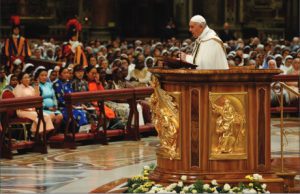 Each October, the Church celebrates World Mission Month, centered around World Mission Day, which is the penultimate Sunday of the month. This year’s theme is “Baptized and Sent: The Church of Christ on Mission in the World.” In his message for World Mission Day 2019, the Pope Francis “asked that the whole Church revive her missionary awareness and commitment,” calling on all the faithful to answer the call of missionary discipleship in their own lives: “This missionary mandate touches us personally: I am a mission, always; you are a mission, always; every baptized man and woman is a mission. People in love never stand still: they are drawn out of themselves; they are attracted and attract others in turn; they give themselves to others and build relationships that are life-giving. As far as God’s love is concerned, no one is useless or insignificant. Each of us is a mission to the world, for each of us is the fruit of God’s love. Even if parents can betray their love by lies, hatred and infidelity, God never takes back his gift of life. From eternity he has destined each of his children to share in his divine and eternal life (cf. Eph 1:3-6).” |
Call to serving beyond borders
Catholic mission work is a multi-faceted calling that in the United States encompasses a huge, diverse community of missionaries who are priests, religious and laypeople of various ages and involved in many different pastoral and humanitarian endeavors. They are supported by parish communities, dioceses and organizations that pray, donate money and resources, and raise awareness of the missions.
“There are a lot of people with missionary experience out there,” McCrabb said.
Among his assignments as a missionary, Father Hanlon taught a Scripture class at a women’s college in Japan and lived in a poor area of Mexico City, where he helped build up the Catholic community in a pastoral role.
“We tried to live as simply as the people did,” Father Hanlon said. “There was an open sewer by the house. We had mud for streets when it rained, but you also had a greater sense of community in a poorer neighborhood, where the houses are smaller, the doors are open and everyone knows each other.”
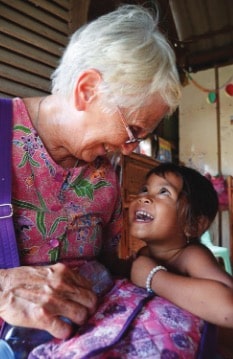
Spizale said Family Missions Company has more than 350 lay missionaries in 12 countries. Their duties differ depending on what country they are assigned. In Mexico, the missionaries help parish priests bring Communion to shut-ins, assist at Mass and lead Bible studies.
“Wherever we go, we talk to the bishop in that area and ask for permission to come in,” Spizale said. “We tell the local ordinary that our desire is to preach the Gospel and serve the poor, and if there is a way to do that in their diocese, let’s find a way to work on that job.”
The lay missionaries sent by Lay Mission-Helpers are teachers, technicians, administrators and clerical staff who assist existing diocesan structures in countries such as Ecuador, Ghana, Uganda and Papua New Guinea. The missionaries are young single adults, married couples with children and retirees.
“The call to mission comes to people at very different times in their lives,” England said. “They definitely need to be faith-filled, have a call to serve beyond our own borders, flexible and open to things different from what they know.”
Lay Mission-Helpers had missionaries in Cameroon until increasing political instability prompted the organization to pull its missionaries from that country about a year ago.
“We take very seriously the safety of our lay missioners, especially so when children are involved,” said England, who was a missionary in Sierra Leone for four years until civil war brought violence near where she was stationed.
“As the threat escalated, we thought the missioners could be in the wrong place at the wrong time, and those circumstances were increasing in number,” England said. “We had to get our people out.”
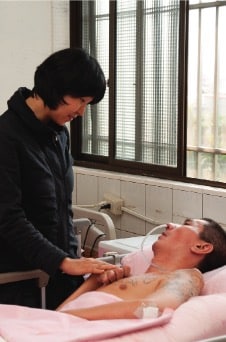
Catholic missionaries in war-torn and politically volatile regions in recent history have been threatened with violence, harassed, assaulted, kidnapped and killed.
In 1980, four U.S. Catholic missionaries — three Maryknoll sisters and a lay woman — were raped and murdered by members of the El Salvador National Guard. In 1981, Father Stanley Francis Rother, a priest of the Archdiocese of Oklahoma City, was killed while serving in Guatemala. He was beatified in September 2017, and his cause for canonization is proceeding.
Sister Dorothy Stang, a Notre Dame de Namur sister who was asked by Church leaders in Brazil to serve the indigenous population in that country, was killed there in 2005 for her work in fighting for the property and land rights of rural workers and peasants.
Last November, three Claretian missionaries were abducted in Cameroon and held captive for several days before being released. Their harrowing experience underscored the dangers and volatile conditions that missionaries in some regions frequently have to navigate while working to build up the Church.
While acknowledging the risks involved in being a missionary, England emphasized that violence can happen anywhere.
“Nowhere in the world is completely safe,” she said.
‘The mission has a church’
God’s mission to redeem society, McCrabb said, has its origins in the Old Testament, long before the Incarnation.
“In one sense, mission actually precedes Jesus,” McCrabb said, who added that “it’s not so much that the Church has a mission, the mission has a church.”
As explained by Pope St. John Paul II in his 1990 encyclical, Redemptoris Missio, (“On the permanent validity of the Church’s missionary mandate”), mission work is a single but complex reality that encompasses interreligious dialogue, authentic Christian witness, enculturalization, justice, reconciliation and affirming the dignity of every human being.
“Missionary duty, as John Paul II described it, is the greatest, holiest duty of the Church,” said Spizale, who noted that Pope Francis has called for the Church to have a missionary spirit in going out to the peripheries of society and reaching out to the forgotten, the overlooked and the outcast.
“I think you can easily make the case, based on the Gospels, Church writings, what the popes have said, that mission is the essential function of the Church and it’s important now as ever,” Spizale said. “We have different ways of doing it than we have done it before. The modern world presents many new challenges, but the essential function is a necessity.”
Brian Fraga is a contributing editor for Our Sunday Visitor.
| Mission work in difficult locations |
|---|
|
It’s easy to second-guess John Chau, the 26-year-old American Protestant and self-styled explorer and missionary who was killed last November while trying to contact a remote tribe on North Sentinel Island.
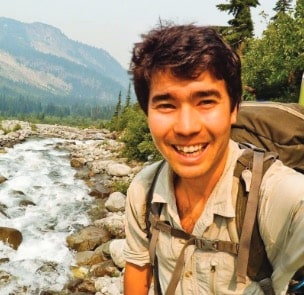 Chau may have been imprudent, even reckless, in convincing a few local fishermen to take him to the island, where tribe members have been known to shoot arrows and hurl spears at outsiders who venture too close to its shores. Also, Chau broke the law when he set foot on that island, which the Indian government has placed off-limits because of the tribe’s hostility to the outside world as well as the possibility that they may lack the immunity needed to fight modern diseases. “We would be certainly more scrupulous in disregarding that law because it would be to disregard the well-being of the people there,” said Matthew Spizale of Family Missions Company. Regardless of what one thinks about Chau’s approach, his story highlights a tension between the demands of the Great Commission and the different variables in the modern world that need to be taken into account. How does a missionary evangelize regions that are hostile to them or the Gospel, or deal with a government that has made certain areas off limits or allowed them to enter the country for humanitarian work on the condition that they do not preach about Jesus? There are no easy answers. Missionaries on the ground have to navigate the particular social, political, legal and cultural factors in a given location. “Difficult situations have to be analyzed in their own context and with great care,” Spizale said. “Even in a college campus in the U.S., you might go to a fraternity and they’ll say they don’t want you there. You take a step back and reevaluate what to do. It could be praying to God to give you a way to reach those people. “The only universal guideline here is to pray, to ask the Holy Spirit, who is the primary agent of evangelization, to open the door for you,” Spizale added. Father Chris Saenz, a Columban Fathers missionary priest who spent 17 years in Chile, said he could relate to Chau’s youthful idealism. “Now as more of a seasoned veteran, I look back and I will say to myself, ‘Well, there’s another way of doing it,'” Father Saenz said. “And you have to consider your impact on people. Like, if my presence, even if I want to help and do a good thing, is going to decimate them, then maybe I have to rethink this.” Father Kevin Hanlon from the Maryknoll Fathers and Brothers said missionaries usually first try to befriend local communities, either through direct contact or more indirect backchannel communications. “For example, in Africa, there might be a town that’s animist or non-Christian and they don’t want missionaries there,” Father Hanlon said. “You might say hello to them, maintain the contact, and eventually something will come up that will allow for a positive interaction between a church member and a person in that town. An invitation gets sent out, and then you go.” |

